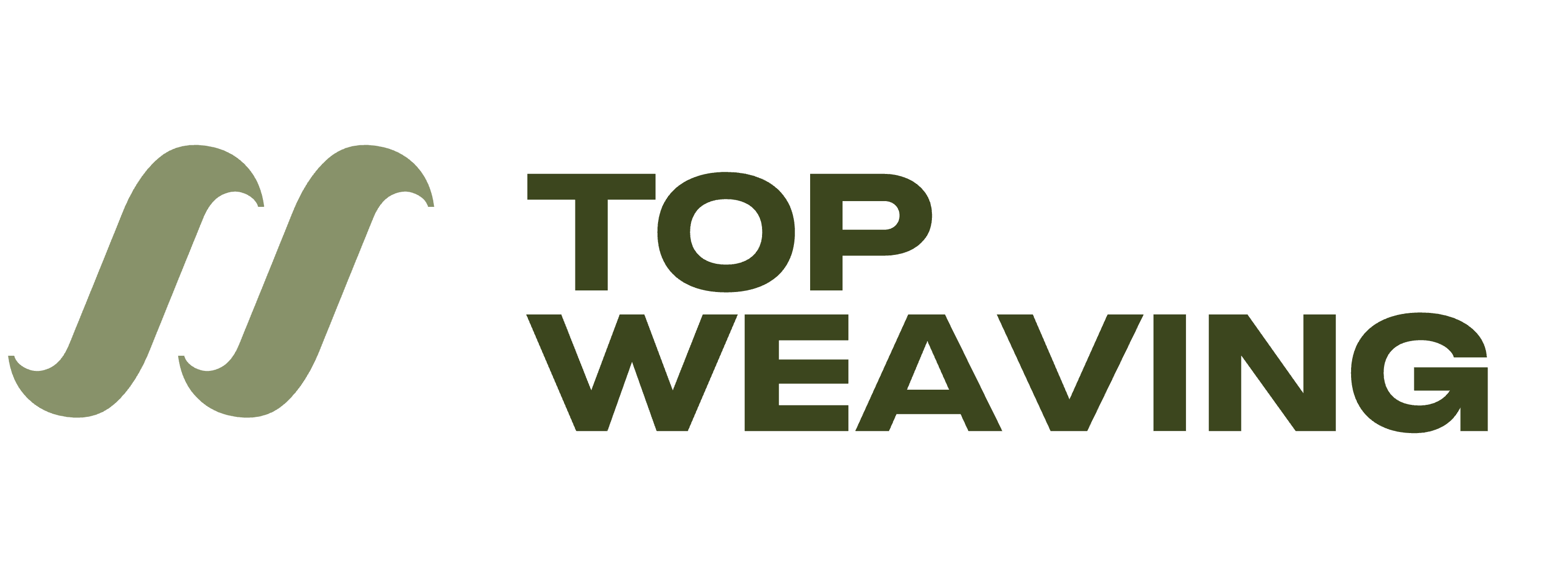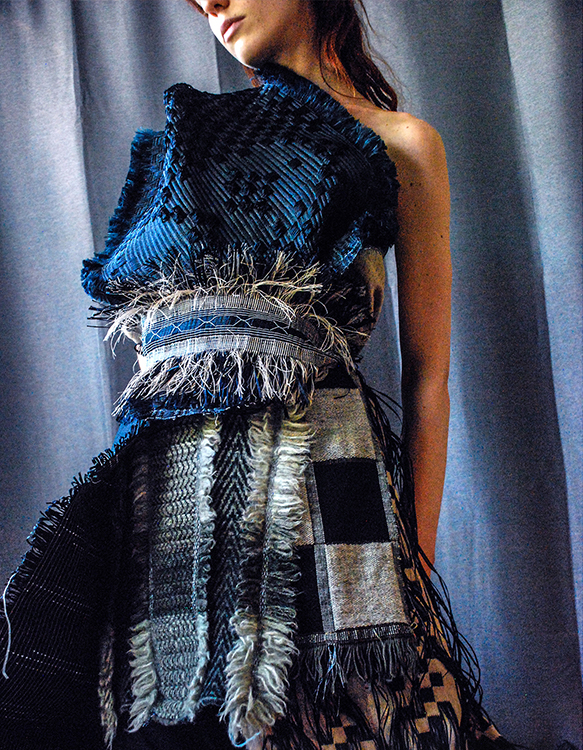Weaving is a fascinating art form that has been practiced for centuries. It involves the interlacing of threads or fibers to create fabric, baskets, rugs, and various other items. The process of weaving can be traced back to ancient civilizations such as Egypt and Mesopotamia, where it played a crucial role in their cultural and economic development. Today, we will explore some creative weaving ideas for your daily life!
Throughout history, weaving has been an integral part of different cultures around the world. In many societies, it was not only a means of creating functional items but also a form of artistic expression. For example, in Native American cultures, weaving was used to create intricate patterns and designs that held deep symbolic meanings.
Key Takeaways
- Weaving is an ancient art form that has evolved over time and offers endless creative possibilities.
- There are various types of weaving techniques and materials used, from traditional to eco-friendly options.
- Weaving can be a therapeutic practice and has been shown to reduce stress and anxiety.
- Weaving can be used for home decor, fashion, and art, with both beginner and advanced techniques available.
- Contemporary weaving artists are pushing the boundaries of the craft and inspiring new ideas.
The History and Evolution of Weaving
The art of weaving has evolved significantly over time. Ancient civilizations used basic techniques such as hand-weaving on simple looms made from wood or bone. These early weavers would painstakingly interlace each thread by hand to create beautiful textiles.
The industrial revolution brought about significant changes in the world of weaving. With the invention of power looms and mechanized processes, mass production became possible on a scale never seen before. This revolutionized the textile industry but also led to concerns about worker exploitation and loss of traditional craftsmanship.
In recent years, there has been a resurgence in interest in hand-weaving and traditional techniques as people seek out unique handmade products with a personal touch. Contemporary weavers are experimenting with new materials and pushing the boundaries of what can be achieved through this ancient art form.
Types of Weaving Techniques and Materials Used
There are various types of weaving techniques that can be employed depending on the desired outcome. Basic techniques include plain weave (also known as tabby weave), twill weave, satin weave, basketweave, among others.
Advanced weaving techniques involve more complex patterns such as tapestry weaving or jacquard weaving which allows for intricate designs and images to be woven into the fabric. These techniques require a higher level of skill and precision.
Different types of looms are used in weaving, ranging from simple handheld looms to large floor looms. Each type of loom offers its own advantages and limitations, allowing weavers to choose the most suitable one for their projects.
The materials used in weaving can vary widely depending on the desired outcome. Traditional materials include cotton, wool, silk, and linen. However, contemporary weavers are also exploring unconventional materials such as recycled fabrics, plastic fibers, or even natural elements like branches or grasses.
Creative Weaving Ideas for Beginners
If you’re new to weaving and looking for some creative ideas to get started with this art form, there are plenty of beginner-friendly projects that can help you develop your skills while creating beautiful pieces.
One simple project for beginners is a woven wall hanging. This can be done on a small handheld loom using colorful yarns or fabric strips. It’s a great way to experiment with different textures and colors while learning basic weaving techniques.
Another idea is to try weaving with unconventional materials such as ribbons or strips of old t-shirts. This adds an interesting twist to your projects and allows you to repurpose items that would otherwise go to waste.
For those who prefer working with natural materials, weaving with items like twigs or dried grasses can create unique organic textures in your pieces. These natural elements add depth and character to your weavings while connecting you more closely with nature.
Advanced Weaving Techniques for Experienced Weavers
Once you’ve mastered the basics of weaving, it’s time to challenge yourself with more advanced techniques that will take your skills to the next level.
Complex weaving techniques such as tapestry weaving allow you to create intricate designs by interlacing different colored threads together. This technique requires careful planning and attention but offers endless possibilities for creativity.
Weaving with multiple materials is another advanced technique that can produce stunning results. By combining different fibers, textures, and colors, you can create visually striking pieces that are truly one-of-a-kind.
If you’re looking to add more complexity to your weavings, experimenting with intricate patterns is a great way to do so. This can be achieved through techniques like overshot weaving or double weave. These techniques require a higher level of skill and attention to detail but offer endless opportunities for creativity.
Weaving as a Therapeutic Practice
Weaving has long been recognized for its therapeutic benefits. Engaging in this creative practice can have a positive impact on mental health and overall well-being.
One of the main benefits of weaving is its ability to promote relaxation and reduce stress. The repetitive motion of interlacing threads can be meditative, allowing the mind to focus on the present moment and let go of worries or anxieties.
Weaving also provides an opportunity for self-expression. Through the choice of colors, patterns, and materials used in their projects, weavers can convey their emotions and personal experiences in a tangible form.
Additionally, weaving encourages mindfulness by requiring full attention and concentration on the task at hand. This helps cultivate a sense of calmness and presence in the moment.
Weaving for Home Decor: DIY Projects and Ideas
Weaving offers endless possibilities when it comes to home decor projects. Whether you’re looking to add texture to your walls or create functional items such as rugs or table runners, there are plenty of DIY ideas that will transform your living space.
A popular home decor project is weaving wall hangings. These versatile pieces can be customized with different colors, textures, and patterns to match any interior style. They add warmth and visual interest while creating a focal point in any room.
If you’re looking for something more practical yet stylish, weaving rugs or mats is an excellent option. Using durable materials such as cotton or jute, you can create unique floor coverings that add a touch of handmade charm to your home.
Table runners and placemats are another great weaving project for home decor. These functional items can be woven in various patterns and colors to complement your dining table and elevate your table setting.
Weaving for Fashion: Clothing and Accessory Ideas
Weaving is not limited to home decor; it also offers exciting possibilities in the world of fashion. From scarves and shawls to bags and jewelry, there are numerous ways to incorporate hand-woven pieces into your wardrobe.
Scarves and shawls are popular choices for weaving projects due to their versatility. They can be woven using different fibers such as silk or wool, allowing you to create lightweight accessories for warmer seasons or cozy wraps for colder weather.
Weaving bags and purses is another fashionable option. By combining different materials like yarns, fabric strips, or even leather accents, you can design unique handbags that reflect your personal style.
Jewelry making with woven elements has gained popularity in recent years. Weavers have started incorporating small woven sections into necklaces, bracelets, or earrings, adding a touch of texture and color to their accessories.
Weaving for Art: Contemporary Weaving Artists and Their Work
The world of contemporary weaving is filled with talented artists who push the boundaries of this ancient craft through their innovative techniques and creative vision.
One notable contemporary weaver is Sheila Hicks. Her large-scale installations combine traditional weaving techniques with unconventional materials like rope or wire. Her work blurs the line between sculpture and textile art while exploring themes of color, texture, and form.
Another renowned artist is Anni Albers who played a significant role in elevating weaving from craft to fine art during the 20th century Bauhaus movement. Her geometric patterns created on the loom challenged traditional notions of what could be achieved through weaving.
Inspiration can also be found in the work of contemporary weavers like Maryanne Moodie, who creates vibrant and playful wall hangings using a mix of traditional and modern techniques. Her use of bold colors and patterns brings a fresh perspective to the art of weaving.
Weaving as a Sustainable Practice: Eco-Friendly Materials and Techniques
In an era where sustainability is becoming increasingly important, weaving offers opportunities for eco-friendly practices by utilizing sustainable materials and techniques.
Eco-friendly materials used in weaving include organic cotton, hemp, bamboo, or even recycled fibers. These materials are grown or produced without harmful chemicals or excessive water usage, making them more environmentally friendly alternatives to conventional textiles.
Sustainable weaving techniques focus on minimizing waste and maximizing efficiency. For example, zero-waste weaving aims to utilize every bit of material without generating any scraps that would end up in landfills.
Another sustainable practice is slow weaving which emphasizes quality over quantity. By taking the time to create well-crafted pieces that will last for years, weavers contribute to reducing the demand for fast fashion and disposable products.
The Endless Possibilities of Weaving as a Creative Outlet
In conclusion, the art of weaving offers endless possibilities for creativity and self-expression. From its ancient origins to its contemporary resurgence, this craft has captivated people across cultures throughout history.
Whether you’re a beginner looking to explore your creative side or an experienced weaver seeking new challenges, there are numerous techniques and projects waiting to be discovered within the world of weaving.
Not only does it provide an outlet for artistic expression but it also offers therapeutic benefits such as stress reduction and mindfulness practice. Additionally, by incorporating sustainable practices into our weaving projects, we can contribute towards a more eco-friendly future.
So why not pick up some yarns or fabric strips today? Let your imagination run wild as you embark on your own unique journey through the art of weaving. The possibilities are truly endless, and the beauty and versatility of this ancient craft await your exploration.
FAQs
What is weaving?
Weaving is a method of creating fabric by interlacing two sets of yarn or thread at right angles to each other.
What are the different types of weaving?
There are three main types of weaving: plain weave, twill weave, and satin weave. Each type of weave produces a different texture and appearance in the fabric.
What materials can be used for weaving?
A variety of materials can be used for weaving, including cotton, wool, silk, linen, and synthetic fibers like polyester and nylon.
What are some creative weaving ideas?
Some creative weaving ideas include making wall hangings, rugs, baskets, clothing, and accessories like scarves and bags. Weaving can also be used to create unique patterns and textures in fabric.
What tools are needed for weaving?
The basic tools needed for weaving include a loom, yarn or thread, a shuttle, and a needle. Additional tools may include a warping board, a bobbin winder, and a beater.
Is weaving a difficult skill to learn?
Weaving can be a challenging skill to learn, but with practice and patience, anyone can become proficient. There are many resources available, including classes, books, and online tutorials, to help beginners get started.
Originally posted 2024-01-15 04:04:12.








